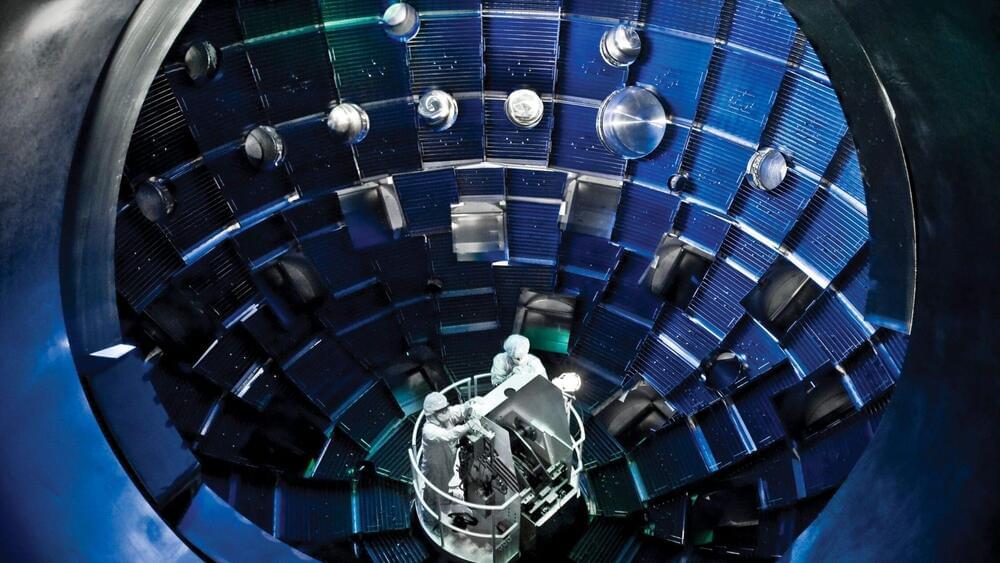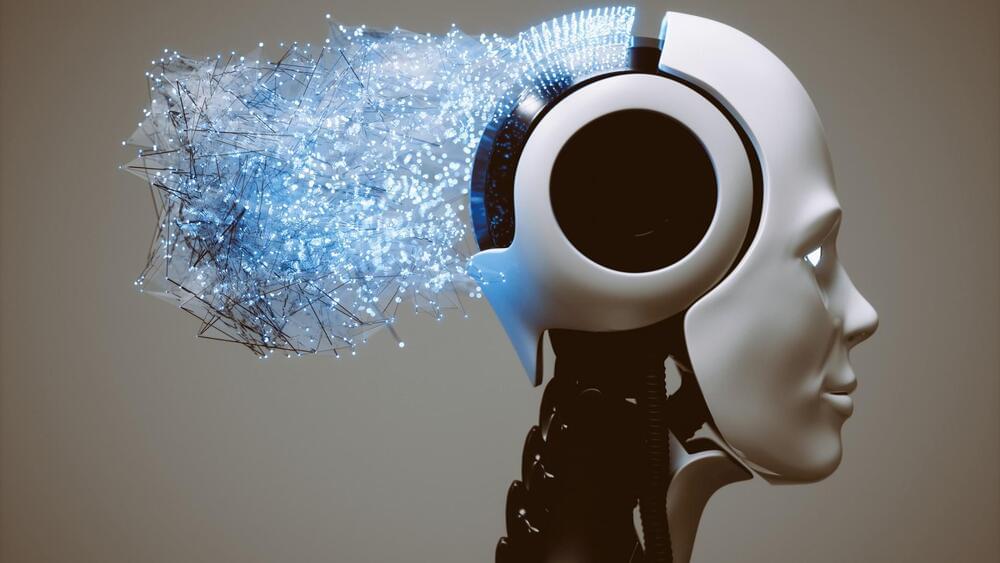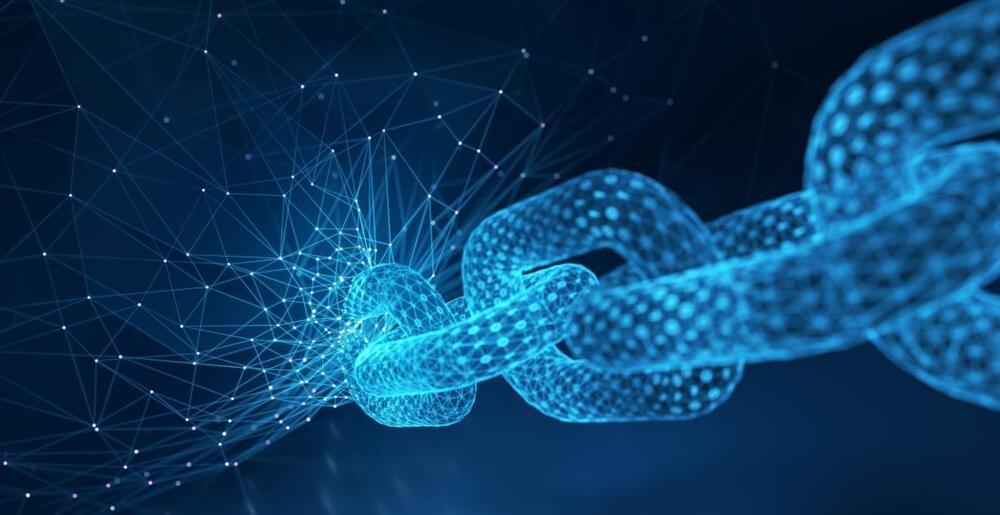U.S. Department of Energy.
The U.S. Department of Energy said on December 13, 2022, that for the first time – and after several decades of trying – scientists have managed to get more energy out of the process than they had to put in.


After all, the AI chatbot seems to be slaying a great deal of search engine responses.
ChatGPT is the latest and most impressive artificially intelligent chatbot yet. It was released two weeks ago, and in just five days hit a million users. It’s being used so much that its servers have reached capacity several times.
But what if we never know the secret sauce behind ChatGPT’s capabilities?
Imaginima/iStock.
OpenAI, the company that developed it, is already being discussed as a potential Google slayer. Why look up something on a search engine when ChatGPT can write a whole paragraph explaining the answer? (There’s even a Chrome extension that lets you do both, side by side.)
Building a wind power operation that can thrive in icy conditions requires a keen understanding of the underlying physics.
Winter is supposed to be the best season for wind power — the winds are more potent, and since air density increases as the temperature drops, more force is pushing on the blades. But winter also comes with a problem: freezing weather.
Frequent severe icing can cut a wind farm’s annual energy production by over 20 percent, costing the industry hundreds of millions.
Piola666/iStock.
Even light icing can produce enough surface roughness on wind turbine blades to reduce their aerodynamic efficiency, which reduces the amount of power they can produce, as Texas experienced in February.

Carmack, known for his work in VR and on classic games like Doom and Quake, is stepping down from his consulting CTO role at Meta.
John Carmack, a titan of the technology industry known for his work on virtual reality as well as classic games like Doom.
Carmack originally joined Oculus as CTO in 2013, after helping to promote the original Oculus Rift prototypes that he received from Palmer Luckey, and got pulled into Meta when the company (then Facebook) acquired Oculus in 2014.
“We built something pretty close to the right thing,” Carmack wrote about the Quest 2. He also said that he “wearied of the fight” with Meta, which is burning billions in its Reality Labs division to build things like VR headsets and software for its vision of the metaverse. Carmack would also write internal posts criticizing CEO Mark Zuckerberg and CTO Andrew Bosworth’s decision making while at Meta, The New York Times reported.
Bosworth, in a tweet thanking Carmack on Friday evening, said that it is “impossible to overstate the impact you’ve had on our work and the industry as a whole. Your technical prowess is widely known, but it is your relentless focus on creating value for people that we will remember most.”
This isn’t not the first time Carmack has been unhappy with Meta’s priorities for VR. The company also killed off his mobile efforts with the Samsung Gear VR — “we missed an opportunity,” he said at the time — and the low-cost Oculus Go, both of which were his projects.

It’s been two years since Uber called it quits trying to make its own driverless cars, but the ride-hauling giant is now speeding to market with a distributed fleet of delivery robots and autonomous vehicles thanks to a recent flurry of partnerships.
Those attending the world’s largest technology show, CES, might have a chance to ride in an all-electric self-driving Uber from Motional, a Hyundai-backed startup based out of Boston. The companies just announced a 10-year agreement to bring millions of autonomous rides across the Uber network. Following deployment in Las Vegas, a broader rollout is being planned for Los Angeles. Motional’s Hyundai IONIQ 5 robotaxis have been making Uber Eats deliveries in Santa Monica since May as part of a pilot.
In Miami, Uber Eats is rolling out sidewalk delivery robots with Cartken’s AI-powered carriers. The robotics company founded by ex-Google engineers currently operates across college campuses with food delivery services like GrubHub. The Uber Eats partnership will be its first beyond college campuses.

Metaverse was a huge, company destroyin, blunder. Smart move this decade is Drop Everything else and chase Agi.
VR pioneer John Carmack is leaving Meta for good. With his departure, the industry loses a visionary and an important voice.
Carmack published his farewell letter on Facebook after parts of the email were leaked to the press.
In the message to employees, Carmack, as usual, doesn’t mince words. He cites a lack of efficiency and his powerlessness to change anything about this circumstance as reasons.
Synchron, a neurovascular bioelectronics medicine company, today announced publication of a first-in-human study demonstrating successful use of the Stentrode™ brain-computer interface (BCI), or neuroprosthesis. Specifically, the study shows the Stentrode’s ability to enable patients with severe paralysis to resume daily tasks, including texting, emailing, shopping and banking online, through direct thought, and without the need for open brain surgery. The study is the first to demonstrate that a BCI implanted via the patient’s blood vessels is able to restore the transmission of brain impulses out of the body, and did so wirelessly. The patients were able to use their impulses to control digital devices without the need for a touchscreen, mouse, keyboard or voice activation technology. This feasibility study was published in the Journal of NeuroInterventional Surgery (JNIS), the leading international peer-review journal for the clinical field of neurointerventional surgery, and official journal of the Society of NeuroInterventional Surgery (SNIS).
Is digital immortality possible by uploading your mind? Dr. Paul Thagard discusses Neuralink, artificial intelligence, mind uploading, simulation theory, and the challenges involved with whole brain emulation.
Dr. Paul Thagard is a philosopher, cognitive scientist, and author of many interdisciplinary books. He currently teaches as a Distinguished Professor Emeritus of Philosophy at the University of Waterloo, where he founded and directed the Cognitive Science Program.
Dr. Thagard is a graduate of the Universities of Saskatchewan, Cambridge, Toronto (with a PhD in philosophy) and Michigan (with an MS in computer science). He is a Fellow of the Royal Society of Canada, the Cognitive Science Society, and the Association for Psychological Science. The Canada Council awarded him a Molson Prize in 2007 and a Killam Prize in 2013.
LINKS & RESOURCES:
Dr. Paul Thagard’s Website:
Balance: How It Works and What It Means.


Check out all the on-demand sessions from the Intelligent Security Summit here.
On September 15, 2022, the Ethereum network migrated from a proof-of-work to a proof-of-stake consensus mechanism called the Merge. Apart from reducing energy consumption by 99%, the Merge laid the foundations for building a highly secure and scalable blockchain. However, despite the benefits of the Merge, it also marks a regression in privacy, which is a significant concern for Ethereum users.
Privacy generally takes a backseat to other core blockchain topics such as decentralization and scalability. In fact, blockchain networks’ zeal for data transparency often comes at the cost of compromising individual and enterprise privacy. But without a privacy-focused approach — even one that gives users optional privacy — Ethereum decentralized applications (dapps) will repeat the same mistakes of Web2 applications.